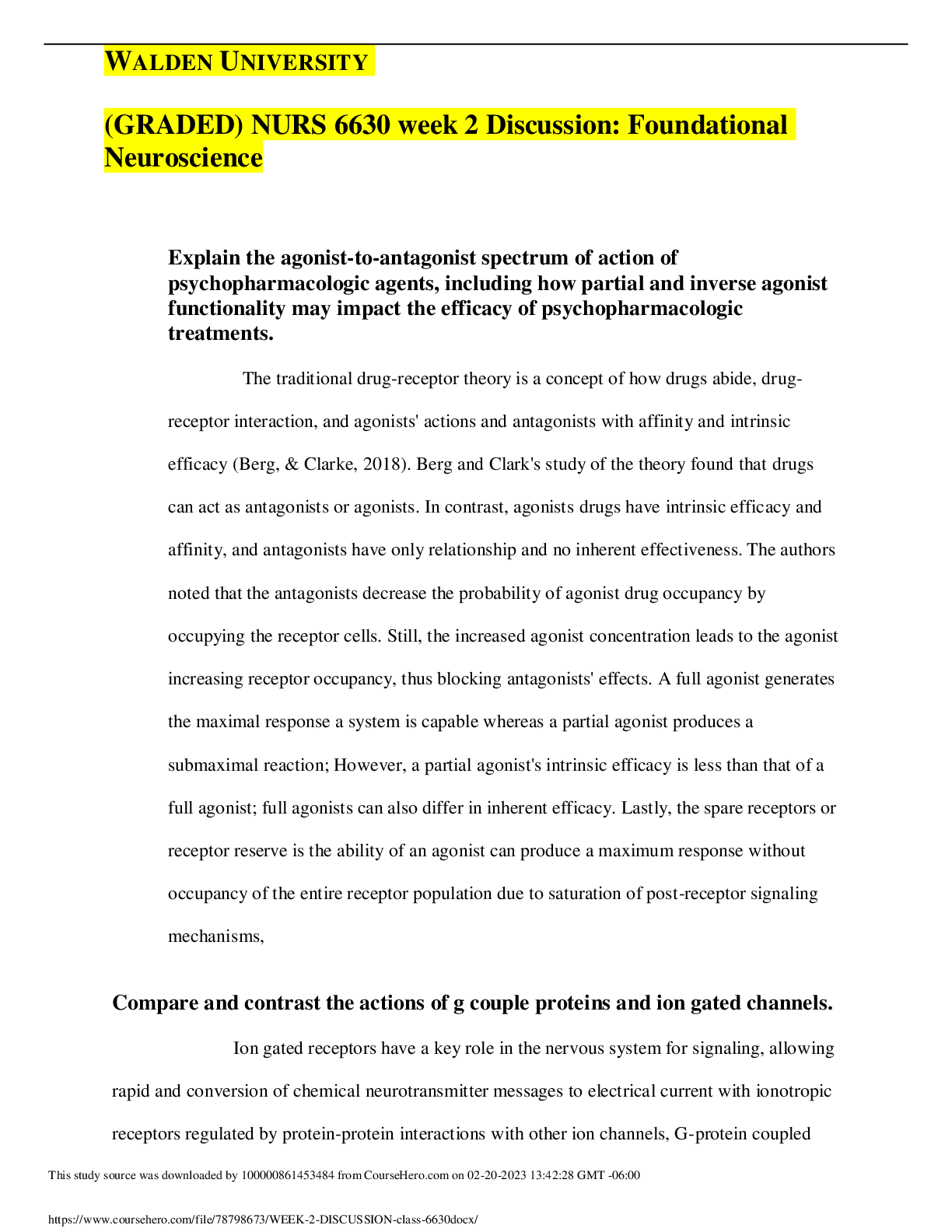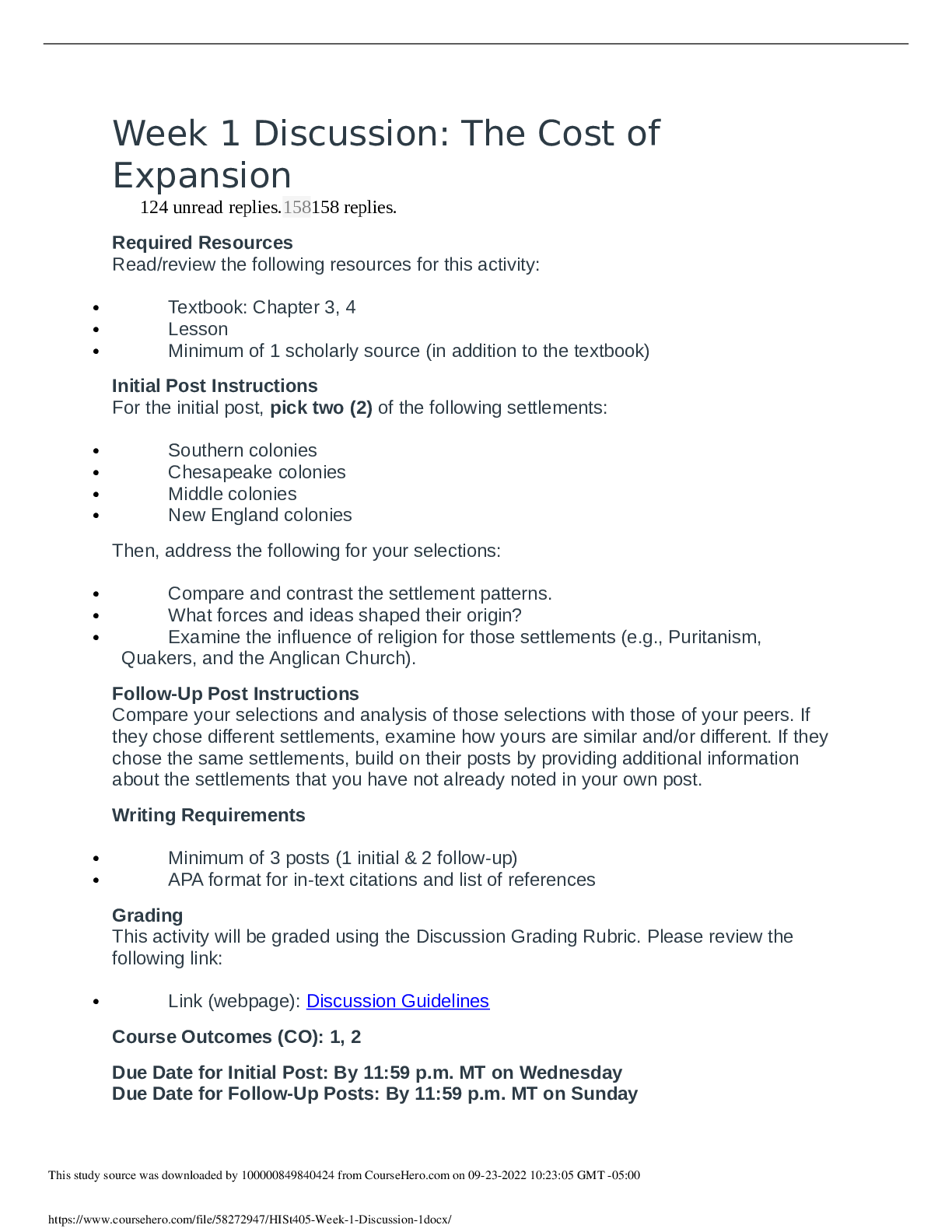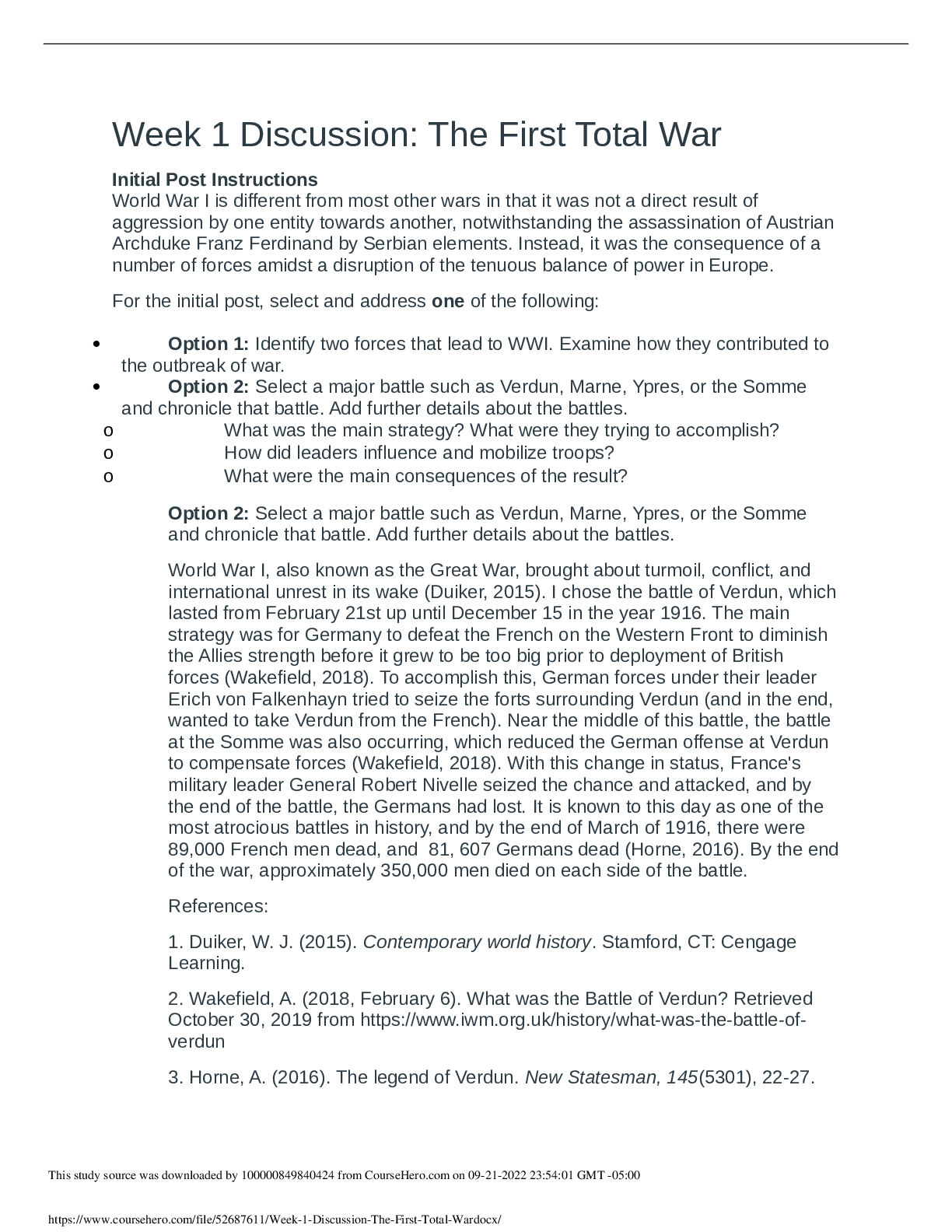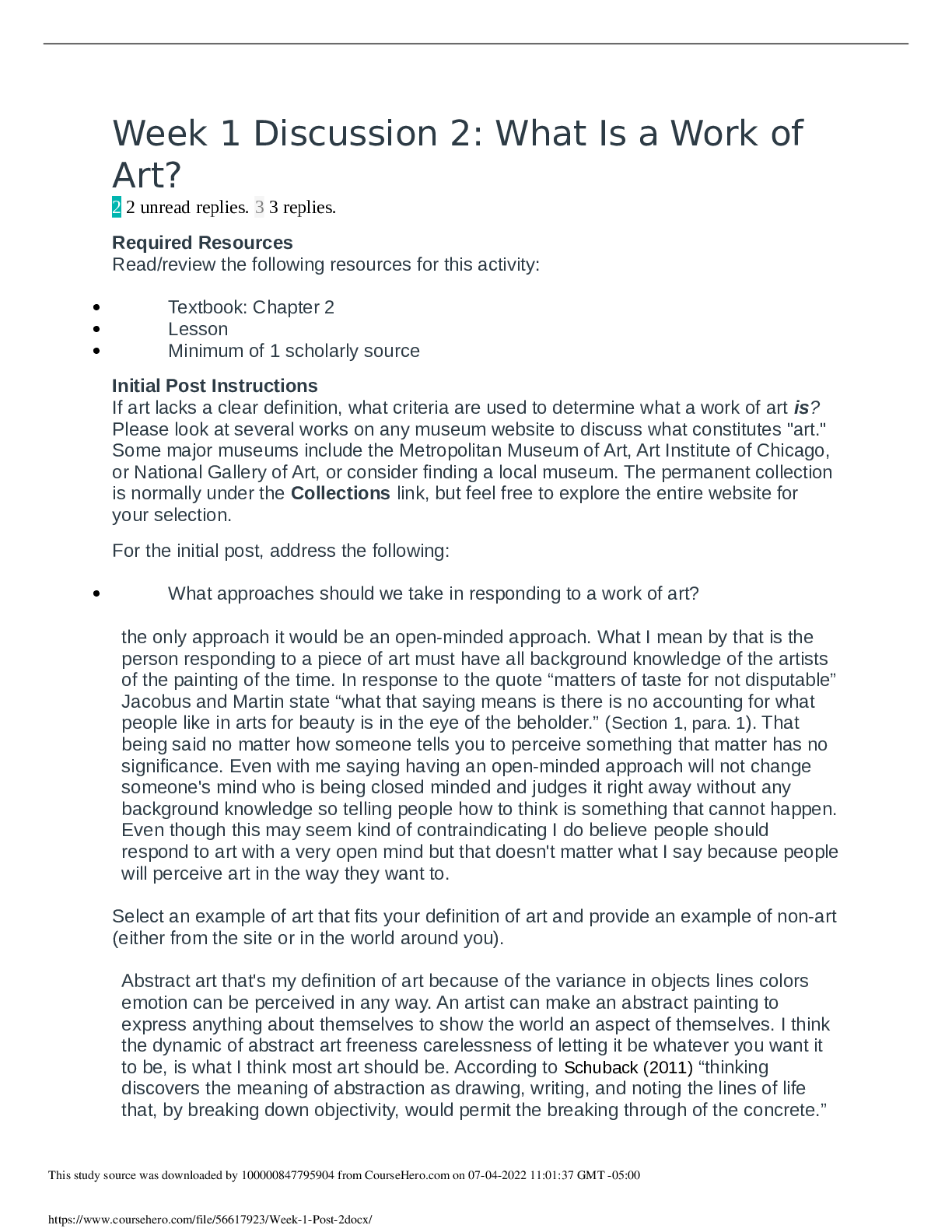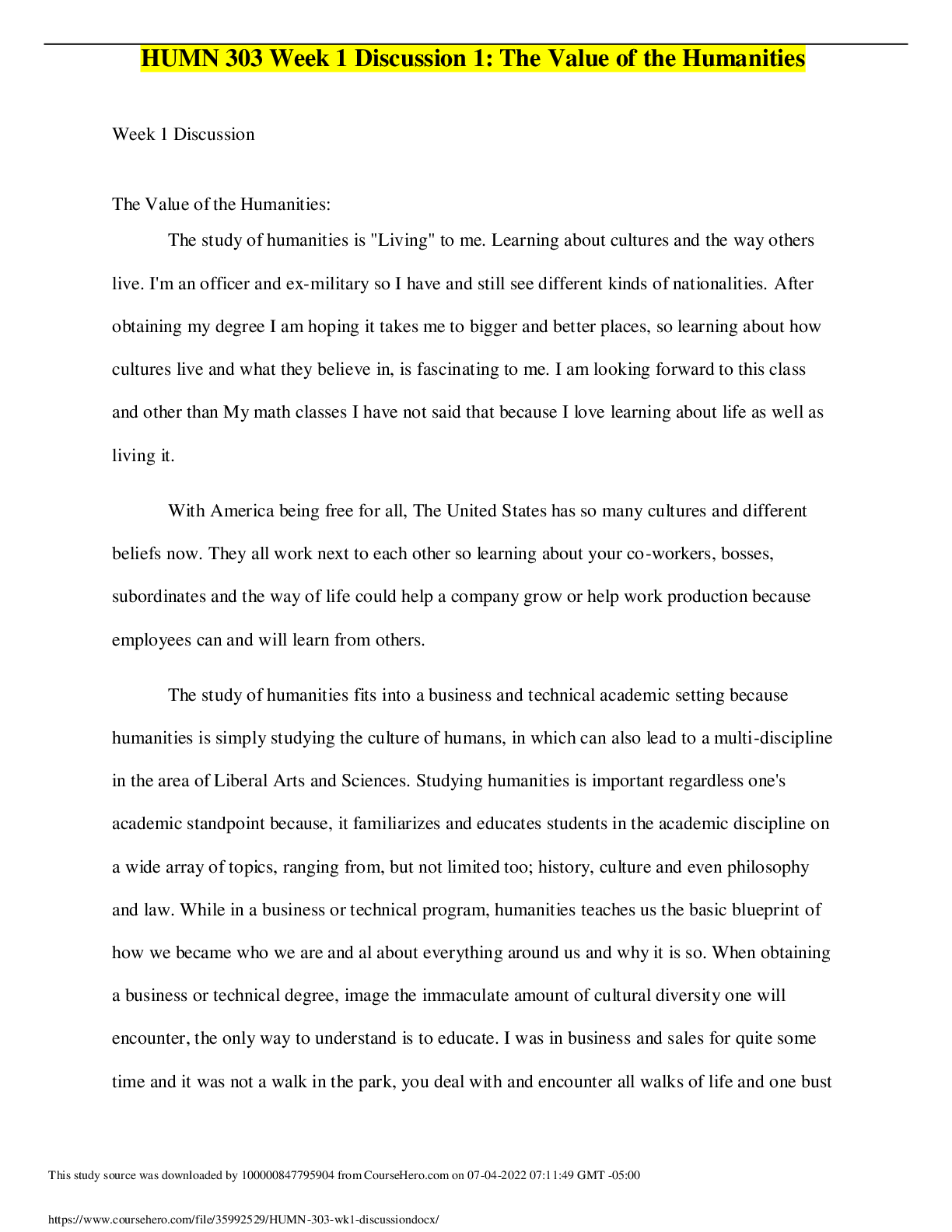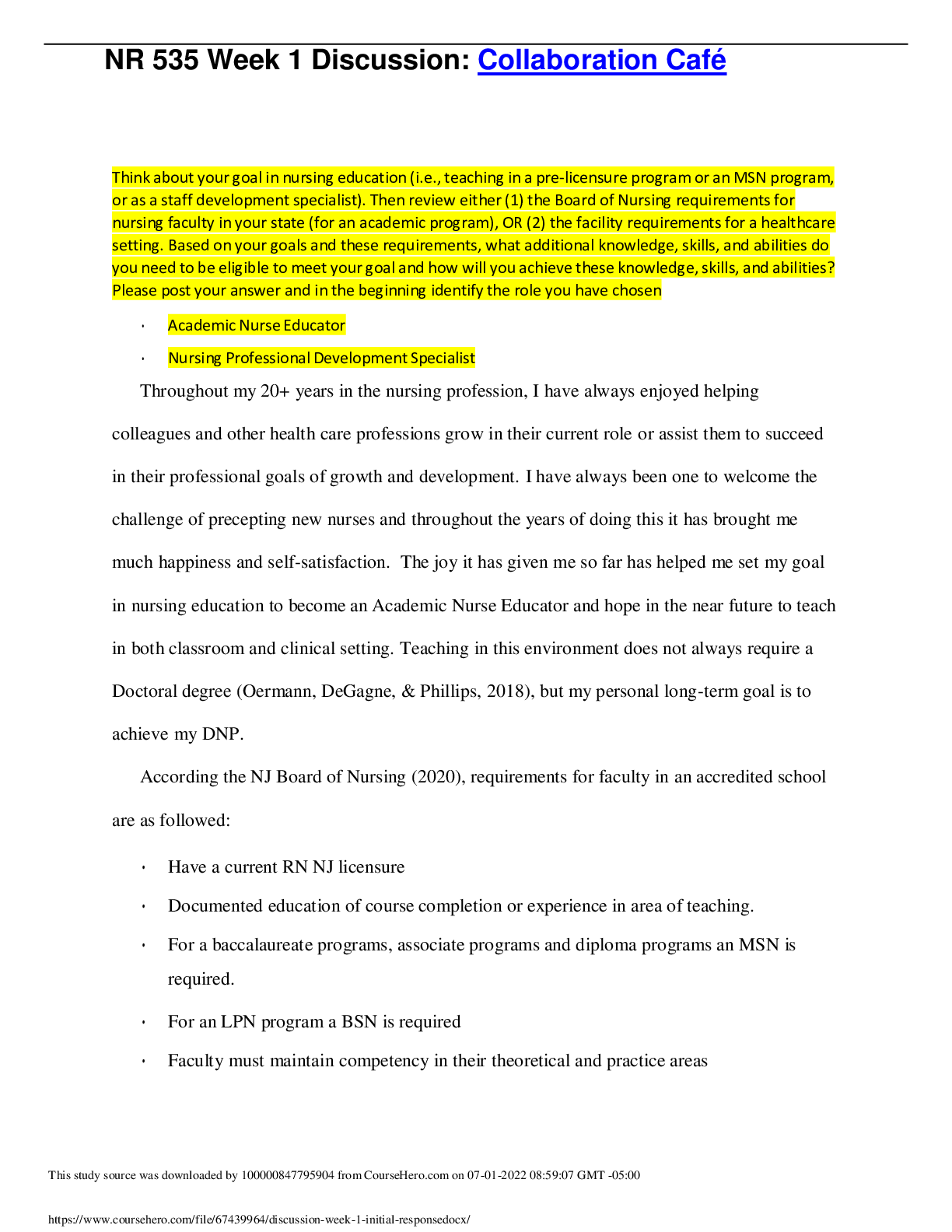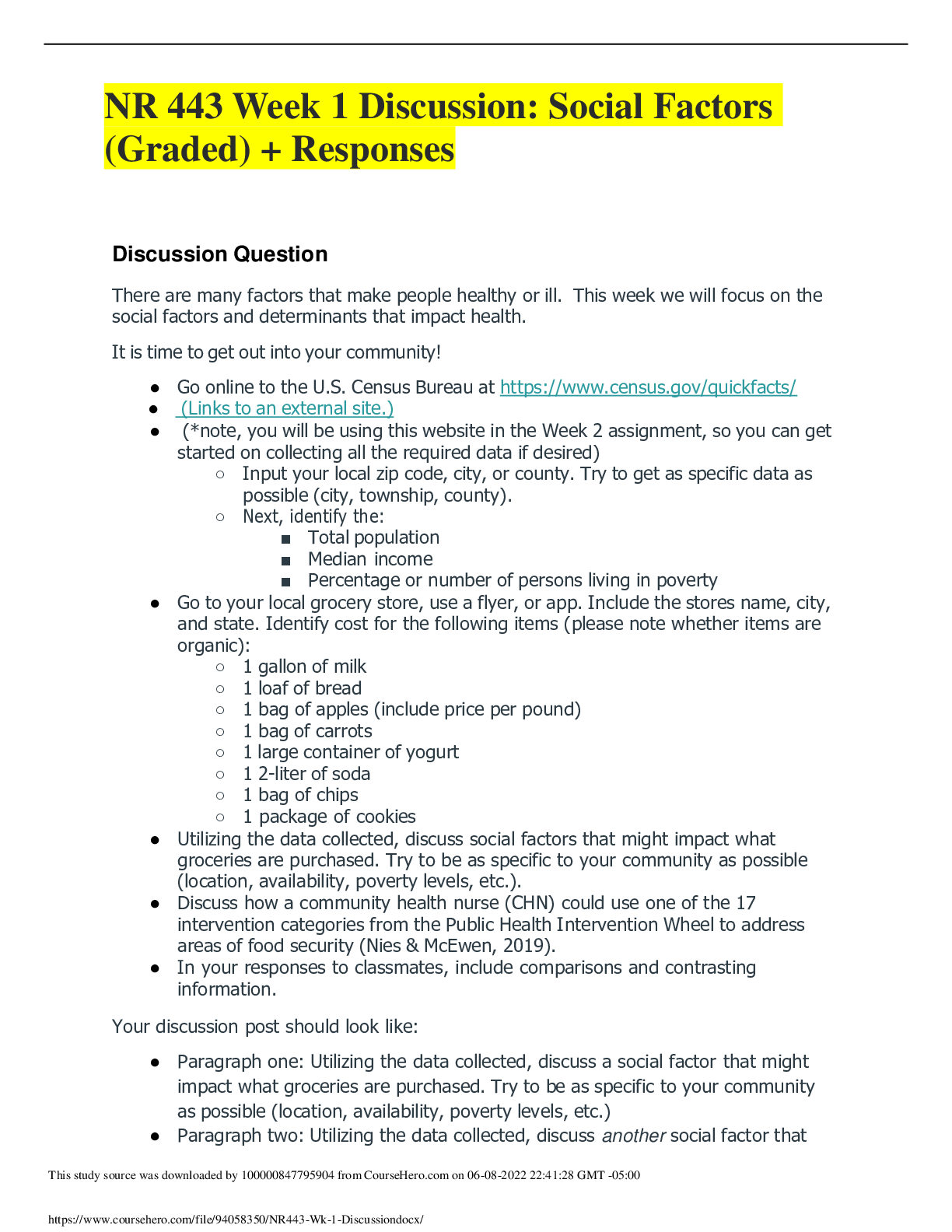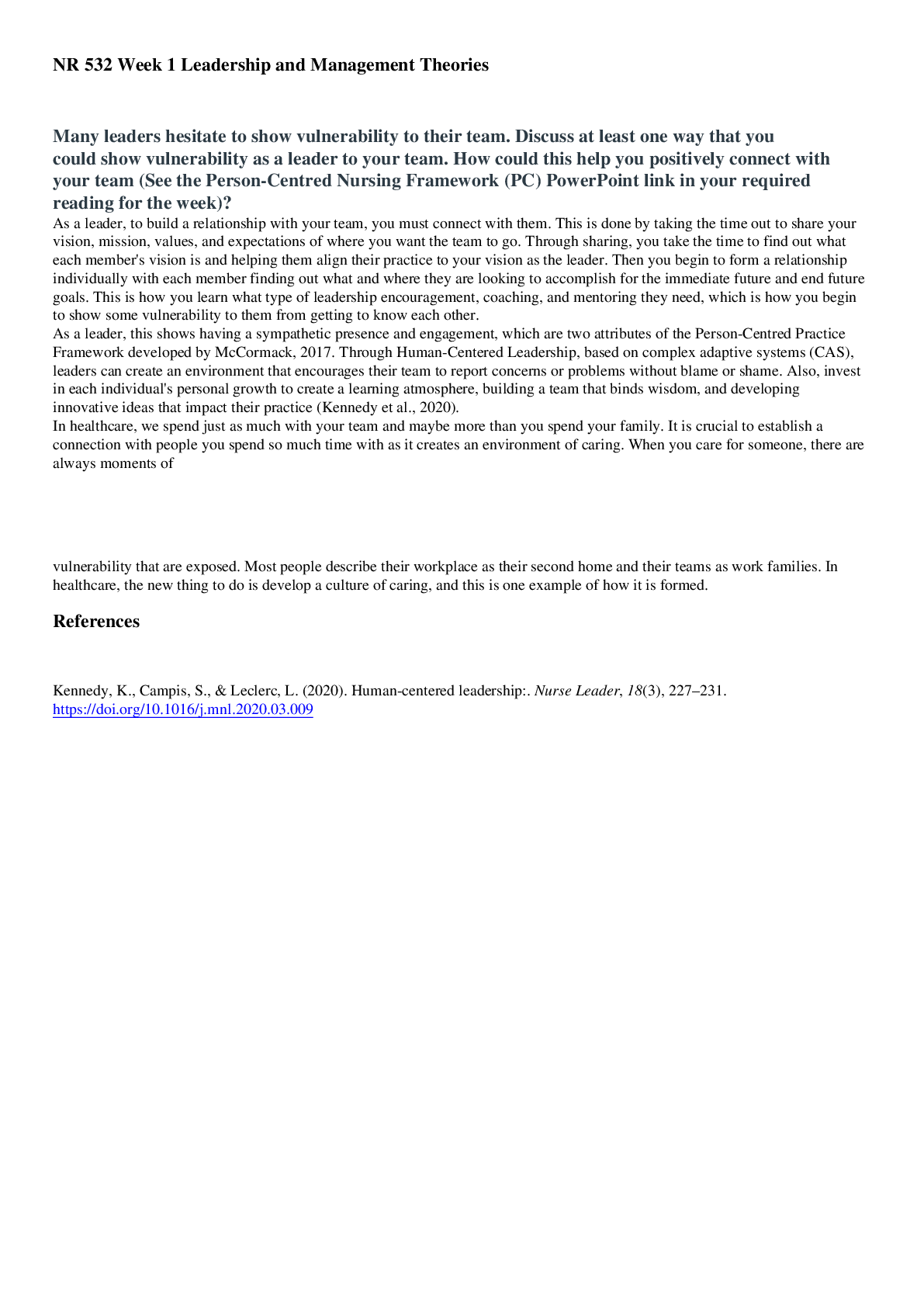Finance > DISCUSSION POST > HSM 340 Week 1 Discussion Question 2 – Reimbursement and Payment Determination (GRADED) (All)
HSM 340 Week 1 Discussion Question 2 – Reimbursement and Payment Determination (GRADED)
Document Content and Description Below
HSM 340 Week 1 Discussion #2 Reimbursement and payment determination A. Discuss the major reimbursement methods used in health care. B. Discuss the major aspects of Medicare benefits. C.... List some of the important considerations when negotiating a health plan contract. A. Major reimbursement methods used in healthcare: historical cost reimbursement, specific services, capitated rates, and bundled services. Some payors payment schedules are based on a negotiated fee schedule, which are mostly a combination of fee-for-service and bundling. Medicare uses the RBRVS (resource based relative value scale) in determining their payment schedules. While other payors choose an enrolled/capitated basis which restricts to providers and services defined and within network. The historical cost reimbursement method was the most popular method used by Medicare, Medicaid, and even BCBS until the early 1980s. This was based on the “reasonable” historical cost of service. This is a rare method used today. Specific services payors usually are from three categories. The first one could be patients without insurance coverage or lack of sufficient coverage and responsible for services performed/rendered. Another category could be patients who have coverage that is not contracted with the provider leaving the patient and/or the payor responsible for the entire billed charges. The last category is where the payor negotiates into a contract with the provider on a discounted-charge basis- agreeing to payments based on the total billed charged at a less than 100% rate. Capitated rates are another method that is becoming a declining method of payment for many providers. In these rare cases, the provider agrees to provide services to the enrolled for a set amount of time and usually for only the specified services outlined in the agreement. This method was most common mid 1990s and has been on the decline since its peak. Bundled plans are how most payment schedules today are classified. There are two features key to these plans. Payments are grouped in to a “mutually exclusive” set(s) of service categories. The second feature is the fixed fee specified as per unit of service (O’Cleverley, 2011). B. Medicare Benefits- There are 3 basic benefit programs: Medicare Part A, Part B, and Part D. There are 3 categories of recipients that qualify for Medicare benefits. The first and most common is the population 65 and over. The next group are disabled individuals and the last in those with end stage renal disease. The 2 primary ways to receive/use the benefits from Medicare are the traditional/original way where the beneficiary is free to go to any provider that accepts Medicare. The other is a Medicare Advantage plan that is an HMO/Private Healthcare plan that limits the terms of allowed services and limits freedoms of providers to the in-network providers. To offset restrictions these often include more of a range of benefits including prescription (some) and health maintenance/routine physicals. Part A- also known as hospital insurance. This program is free to all its beneficiaries if they have 40 or more quarters of Medicare Employment. Part A includes hospital stays, nursing care, hospice care, and some home health services. This benefit does include a deductible that the patient is responsible for before any Medicare payment is made. Co-payment arrangements also exist for any extended hospital stays. Part B helps pays for provider fees, outpatient hospital services, lab testing, and DME (durable medical equipment). There is a deductible included with this plan that is to be met and a co-payment required per service, usually at a rate of 20% of the approved payment amount. Part D started as the Medicare drug plan where beneficiaries can choose from a variety of insurance providers from (now) 2 categories: prescription only or medical services and prescription coverage (Medicare Advantage Plan). Both of which, of course, have different costs and benefit while staying within the basic requirements implemented by the federal government. Many Medicare beneficiaries purchase additional coverage from private companies to help offset the costs of deductibles, co pays, and even provide limited coverage for other services as well. D. Health plan negotiations is an important area of focus within healthcare revenue management. There are 2 elements involved with negotiations that should stay front line. These 2 are: actual payment /fee schedules and the contract language used in which the services provided and paid are clearly defined and outlined. The negotiation should begin with examining, defining/redefining, and clarifying every section of the contract. The textbook lists 10 specific important areas for this examination and restructure. These are: remove contract ambiguity, eliminate retroactive denials, establishing reasonable appeal processes, defining clean claims, removing the “most favored” nation clauses, prohibiting PPO arrangements, include terms for outliners or technology driven cost increases, defining the ability to recover payment after contract termination, preserving the ability to be paid for services, and minimizing health plan rate differentials. The negotiations should end with satisfactorily establishing reasonable pay rates- schedules, which usually consists of combinations of reimbursement models (fee-for-service, bundling, etc.) (O’Cleverely, 2011) REFERENCES O’Cleverley, W., O'Cleverley, J., & Song, P. (2011). Essentials of Health Care Finance (7th ed., pp. 38-45, and 147-153). Sudbury: Jones and Bartlett Learning, LLC. Retrieved August 31, 2020 from: https://online.vitalsource.com/#/books/9781449621988/cfi/6/2!/4/12/62@0:57.2 [Show More]
Last updated: 1 year ago
Preview 1 out of 5 pages

Reviews( 0 )
Document information
Connected school, study & course
About the document
Uploaded On
Feb 22, 2022
Number of pages
5
Written in
Additional information
This document has been written for:
Uploaded
Feb 22, 2022
Downloads
0
Views
77


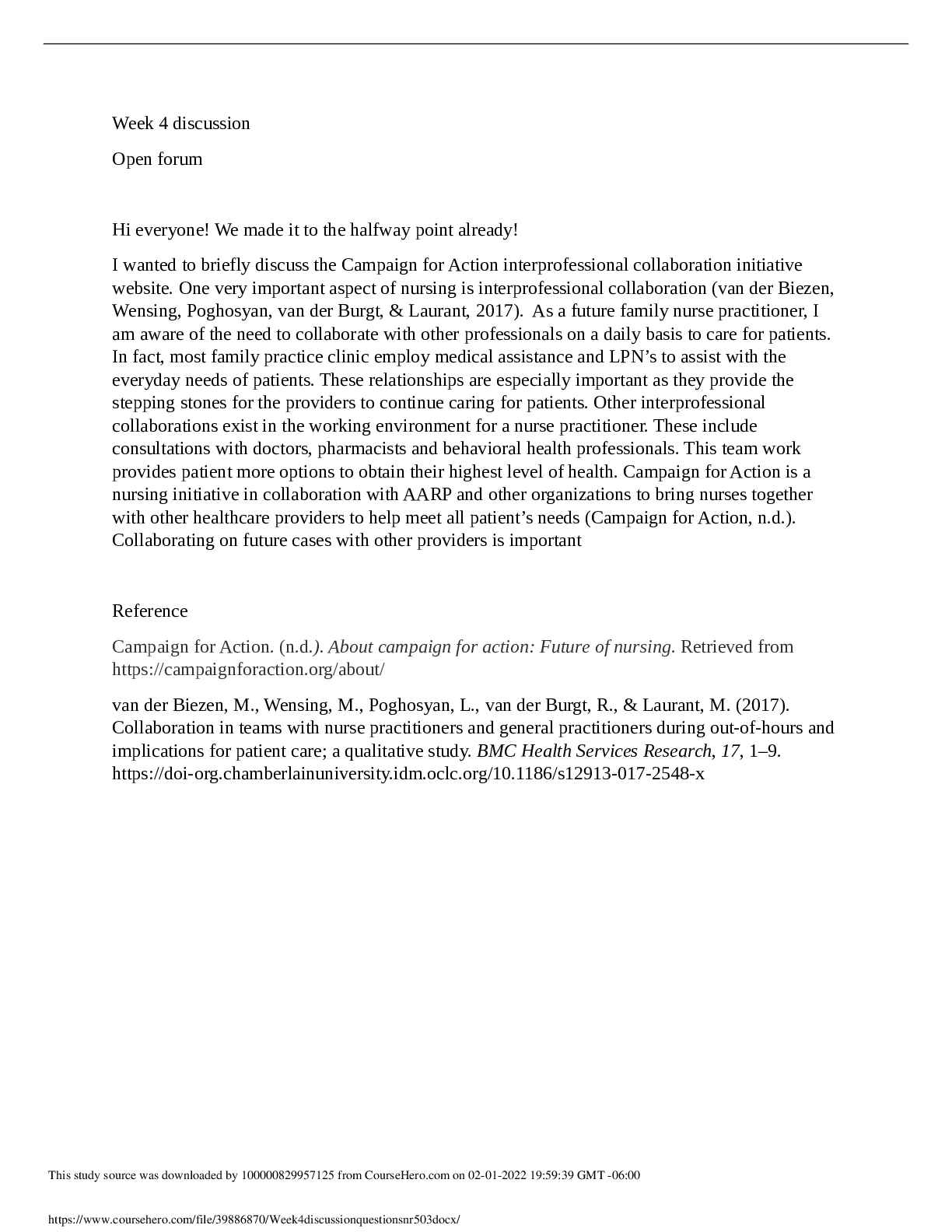

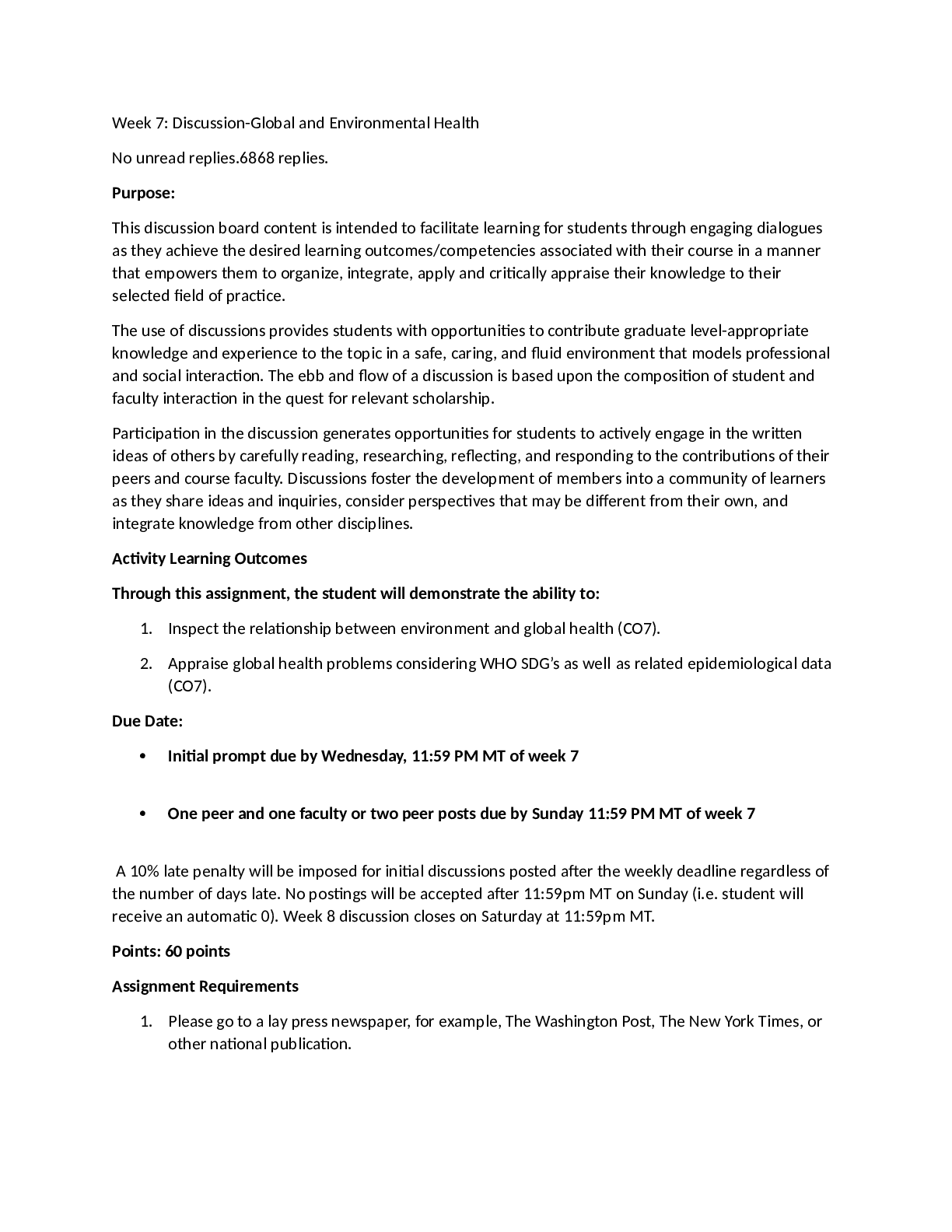


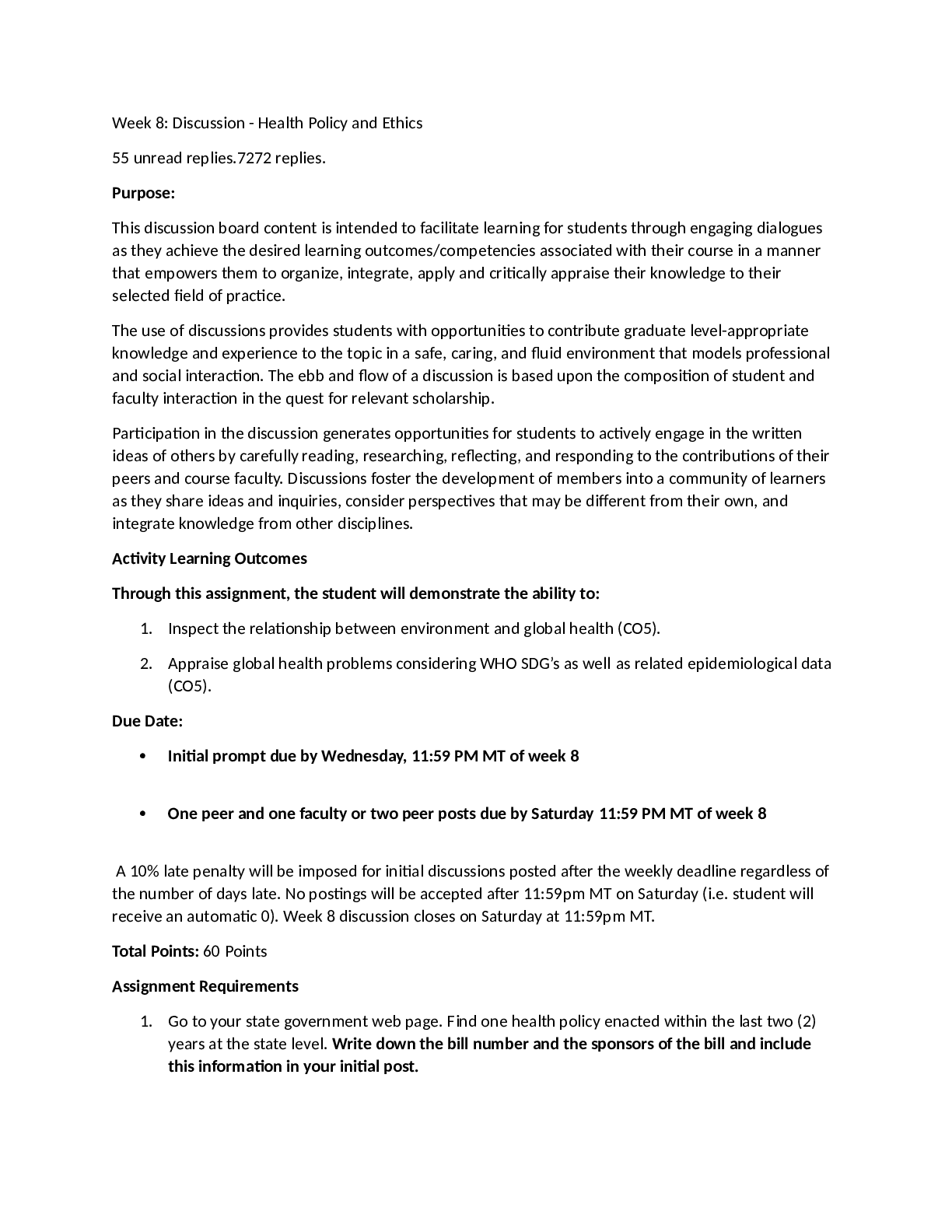

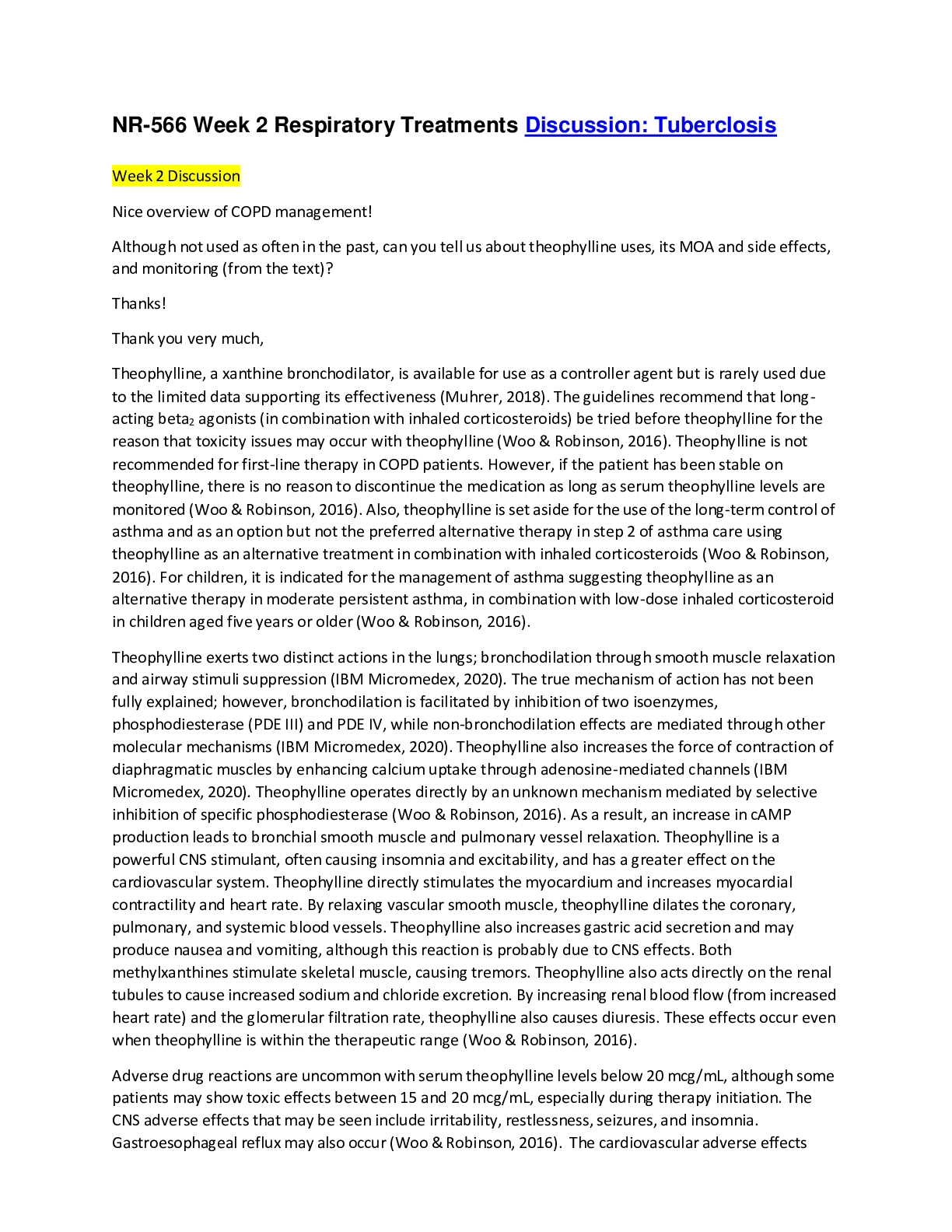
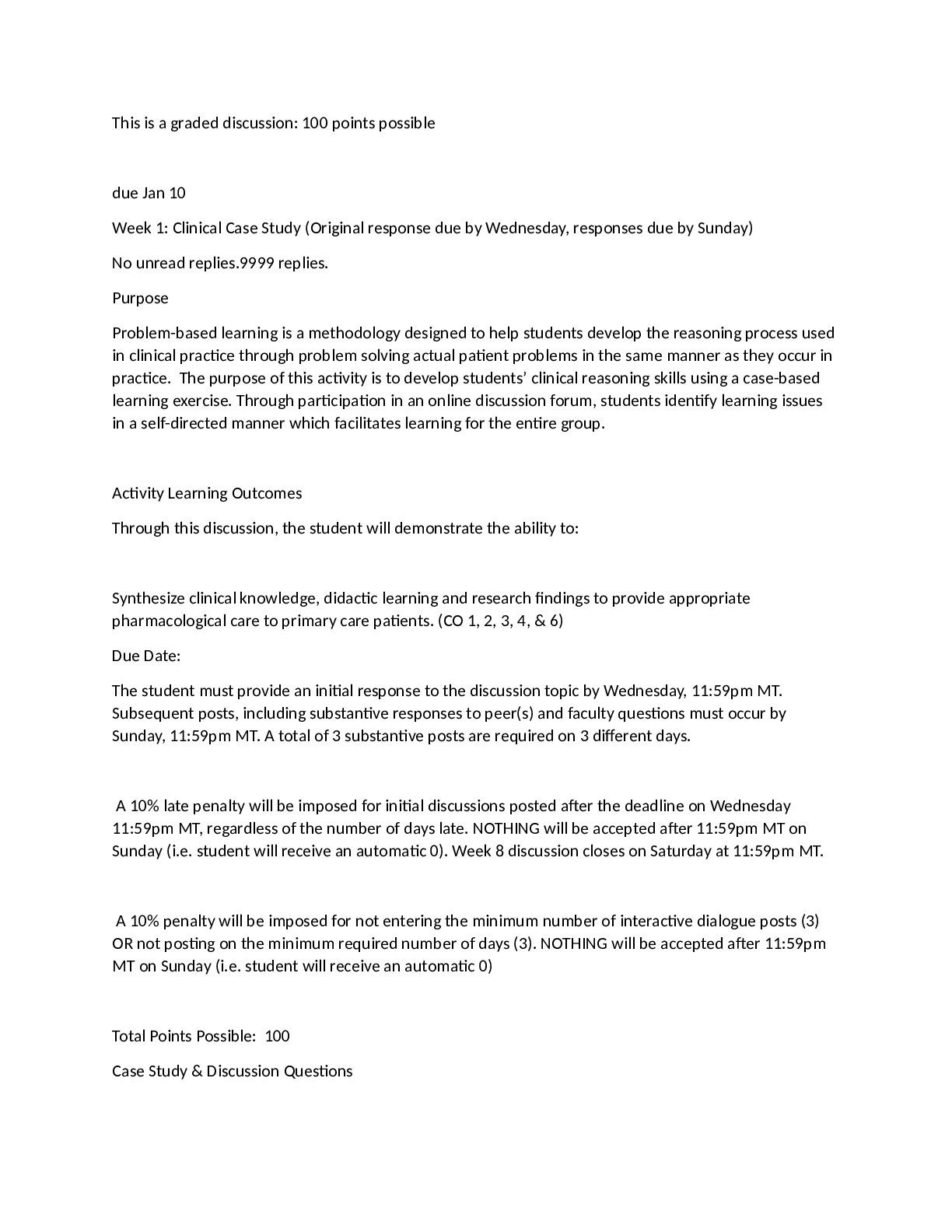
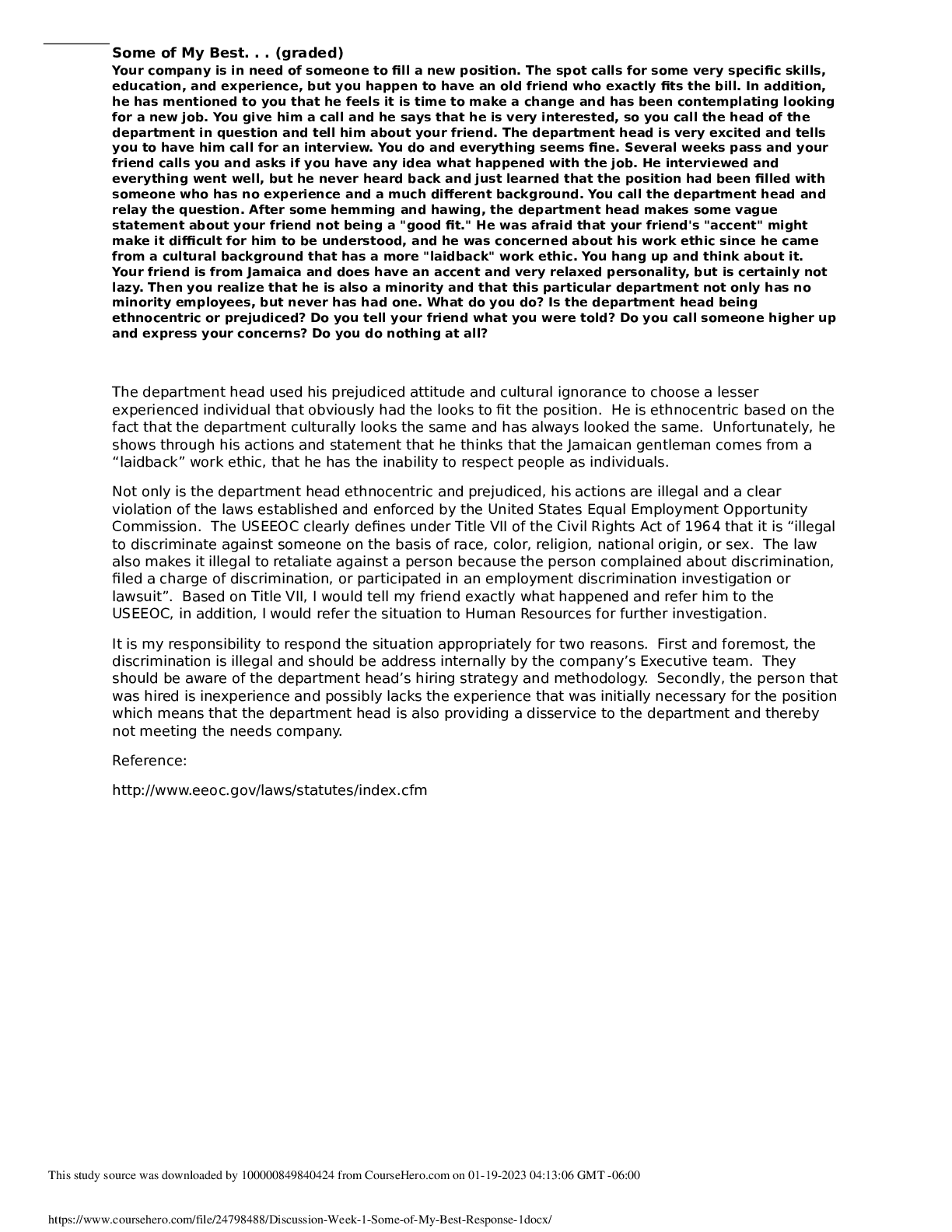


.png)
